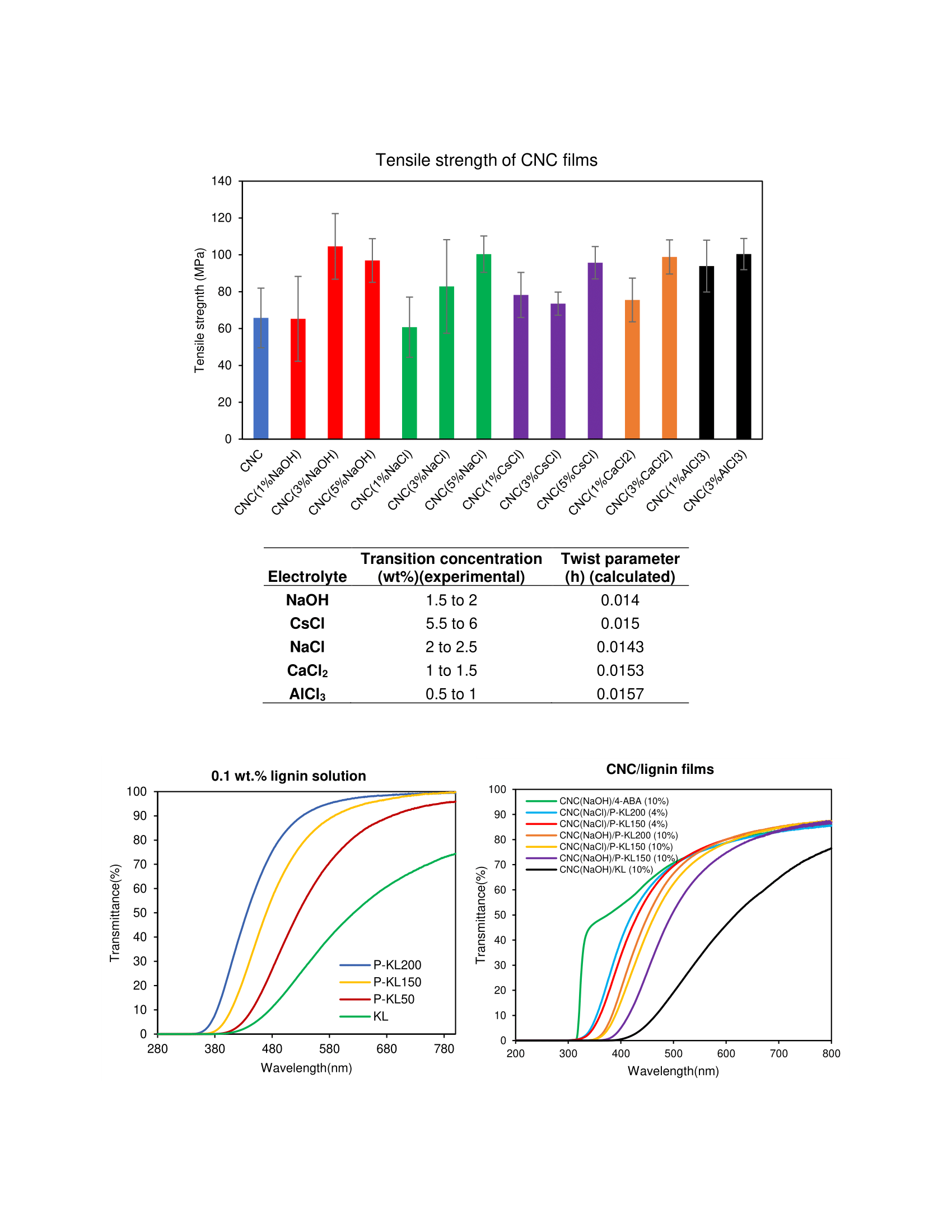(752b) Cellulose Nanocrystal Films - Effect of Electrolytes and Lignin Additions on Optical and Mechanical Properties
AIChE Annual Meeting
2020
2020 Virtual AIChE Annual Meeting
Forest and Plant Bioproducts Division
Chemical Modifications and Processing of Biomaterials
Friday, November 20, 2020 - 8:15am to 8:30am
Cellulose nanocrystals (CNC) have attracted a great attention due to biodegradability, excellent mechanical properties, and natural abundance. CNC films can be used for optical applications due to its intriguing ability to self-assemble into chiral nematic liquid crystal phase with helical arrangement. The chiral nematic self-assembly of CNC can be fine-tuned by controlling the interaction between the CNC rods by the addition of electrolytes, polymers or surfactants and application of high-energy sonication to the suspension prior to film casting. So far there are very few reports on the effect of electrolyte addition on CNC film optical and mechanical properties. In this study we have used electrolytes with various sizes (CsCl, NaCl), valencies (NaCl, CaCl2, AlCl3), pH (NaCl, NaOH); in the concentration range of 0.5 to 5 wt.%. The resultant films were characterized using UV-Vis spectra, XRD and tensile testing. We observed that the chiral nematic to isotropic phase transition concentration was dependant on the type of electrolyte. . Notably for large size and higher valency of counter ion lower transition concentration was needed. Theoretically calculated twist parameter corresponding to chiral nematic to isotropic phase transition with different electrolytes was in agreement with the measured results and was found to be between 1.4 to 1.5. Also, the transparency of the CNC films was electrolyte concentration dependent, which was maximum in certain concentration range. At lower electrolyte concentration CNC film retained iridescence while at higher concentration hazy film was obtained due to CNC aggregation and electrolyte precipitation. XRD results showed that the %crystallinity of pure CNC decreased with increase in electrolyte concentration. Addition of electrolyte also resulted in improvement in the tensile strength (upto 60%) and % strain (up to 170%) of CNC film. This may be due to the presence of ionic interaction between the sulfate ester groups of CNC and positively charged counter ions of electrolyte thereby improving the stress transfer between the rods. Moreover, the amorphous phase introduced at higher electrolyte addition can act as the energy dissipation binder phase thus effectively making the CNC films stronger. Finally, CNC lignin based transparent, UV protection films were designed by incorporating unmodified kraft lignin (KL) and peroxide bleached kraft lignin (P-KL) using electrolytes NaOH and NaCl, respectively. The optical properties of these films were characterized and compared to CNC/4-amino benzoic acid (commercial UV blocking agent) films.


